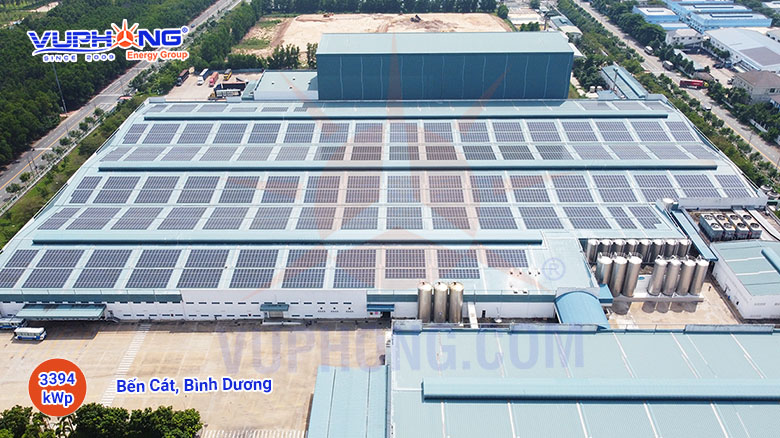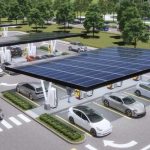
Using solar power has numerous benefits, such as cost savings, environmental sustainability, and a positive reputation. It’s no surprise that even large corporations like Amazon and Target have invested in installing solar panels. However, some companies believe that installing panels is not feasible due to cost, lack of control over commercial property, or limited roof access.
Harness Solar Energy for Good and Profit
Fortunately, community solar has emerged as a new solution. This type of solar power plant allows electricity to be shared among multiple households, companies, or institutions, making renewable energy accessible to businesses of all sizes. With community solar, companies no longer need to host their own photovoltaic systems, and can still benefit from using solar energy without installing a single panel.
By utilizing community solar, companies can become more sustainable, profitable, and reputable without needing to be as large as Target or Amazon. Don’t let the cost of solar panels or lack of roof access limit your company’s potential to benefit from solar energy. Community solar can help you harness the power of the sun for good and profit.
Setting the Stage for Community Solar
Community solar systems are essentially large collections of solar panels located on public or privately-owned shared property. Sometimes, you can buy individual solar panels for your own use, while in other cases, you can purchase a fixed amount of energy production each month. These solar panels are then shared by several community subscribers who receive credit on their electricity bills for their portion of the power generated. Although community systems are straightforward in concept, there are various models with different rules and offerings to cater to all types of businesses. Some of the most common models include:
Utility-Sponsored Model: In this model, utility companies provide consumers with the option to buy renewable energy from a shared facility. The utility company owns the energy and sells or leases shares to consumers who then purchase a fixed amount of electricity at a contracted rate for a certain period. This model protects consumers from rising rates for grid electricity as it becomes more popular. It is usually best suited for small and local businesses since subscription is typically limited to a particular distribution area. An example of this model is the Sacramento Municipal Utility District (SMUD): SolarShares Program.
On-Bill Crediting Model: Residents and businesses can invest in portions of a local solar facility and receive credit on their electricity bills for the power they produce. Credits may be in the form of kilowatt-hour offsets or monetary credits on the bill. The rate of energy fluctuates by location according to various states’s laws and regulations. Large-scale co
Special Purpose Entity (SPE) Model: The SPE model allows individual consumers or companies to enter into a business project to develop a community solar facility. Under this model, participants design, construct and own the community solar facility and then work with a utility company to allocate benefits to its subscribers. Two examples include the Clean Energy Collective and University Park Solar.
Nonprofit “Buy a Brick” Model: Led by a charitable nonprofit, this model allows donors to contribute money to a shared renewable-energy installation for companies to use in underserved communities. Grid Alternatives is one example.
Solar Shines a Light on the Gold for Businesses
Picking the right solar model could mean reducing the cost of your energy bills between 30-50 percent. In 2017, the Solar Energy Industry Association (SEIA) calculated that the top 10 private companies have garnered massive savings of around $47 million using solar, and if the systems operate for another 20 years, they could save nearly a billion dollars.
It’s not all about profitability, though. Investing in community solar helps businesses achieve added value through adherence to sustainability goals and, ultimately, community investment. As Nielsen reports, consumers want to work with companies who are sustainable and environmentally responsible, while an additional 90 percent of CEOs say that sustainability is a differentiating factor in their company’s success. It’s one reason why major companies like Walmart have developed sustainability strategies and goals, including solar energy. The notion that all companies should aggressively promote and communicate their energy and climate strategies by implementing clean-energy solutions like solar has become increasingly popular for consumers and investors alike.
Research from the Harvard Business Review notes that “good environmental stewardship protects a company’s social license to operate, but also drives sales to customers trying to manage their own climate impacts.” As companies invest in community solar, they become a part of a larger movement for sustainability, environmental protection and even long-term job growth. Using community solar provides opportunities for companies to support low-income communities through cleaner energy initiatives while fostering partnerships with solar energy companies who help promote cleaner infrastructure.
For example, ConEd’s Brooklyn-Queens Neighborhood Program not only helped reduce utility rates, but also allowed the company to defer a $1.2 billion infrastructure investment, which saved ratepayers money and was therefore reinvested into the community. By investing more into the local economy, companies can build better reputations and support their communities in sustainable ways.
Solar Powers the Future of Business
According to the SEIA, there are currently 43 states with at least one functioning community-solar project. Additionally, the organization reports that over the next several years, the United States’s community-solar market will account for up to 3 gigawatts of energy to the grid. To put that into perspective, just a single megawatt of solar energy powers 164 homes, so 3 gigawatts has the ability to power nearly half a million homes. The 2017 Solar Means Business Report shows that across the United States, 2.5 gigawatts of solar capacity now powers more than 4,000 companies, showing its potential to successfully power businesses across the nation.
Despite President Trump’s solar tariffs, U.S. solar power is booming, and the future of solar as a corporate power supply seems inevitable. As the world reaches a global climate crisis, community solar finally offers a way for businesses without rooftop access to take meaningful steps toward a stronger reputation, a more profitable bottom line and a more sustainable future.
Read more:





